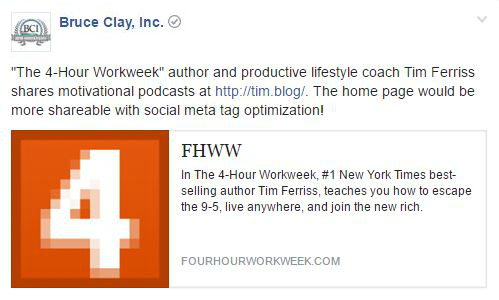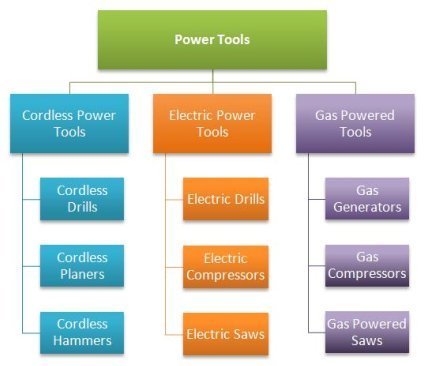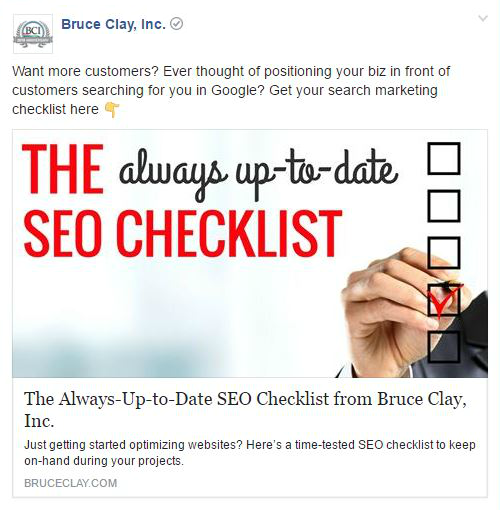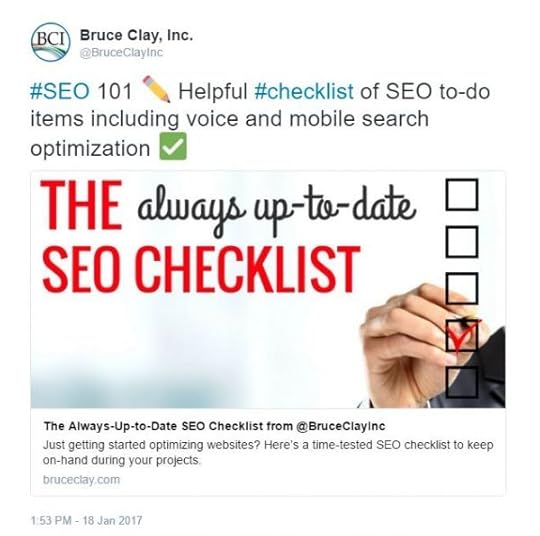Bruce Clay's Blog, page 6
February 15, 2017
Google Mobilegeddon 2: Is This One Too Big to Ignore?
Google Mobilegeddon 2: Is This One Too Big to Ignore? was originally published on BruceClay.com, home of expert search engine optimization tips.
In February 2011, I had a meeting with a Google account representative who shared a presentation deck titled “Grow Your Business With Mobile.” The agenda had four topics:
Why Mobile Matters NOW
How to Think about Search on Mobile
What You Can Start Doing Today
What Is Your Mobile Opportunity?
Oh, how I loved that deck. It had this awesome chart showing the releases of mobile phones from major brands like Apple, Android, Blackberry, Palm, HTC, Moto and Sprint. The chart mapped the release date of each mobile device on the X-axis and the number of mobile queries on the Y-axis for these devices from 2007 through 2010. Google did not display the actual number of mobile queries; instead they elected to normalize the data.
The headline on the chart read “Too Big to Ignore: 30x Growth in 3 Years.” It showed how in several key markets, searches from mobile devices were growing faster relative to desktop searches.

Disclaimer: This is a reproduction, not the real chart.
Following that meeting, I contacted all my SEO agency clients that did not have a good (or any) mobile experience to tell them how the growth of mobile internet use was going to change their business. Some listened and proceeded to implement mobile SEO recommendations, from mobile landing pages to mobile websites.
I’m not sure if “responsive web design” was common vernacular at that time for SEOs, SEMs or developers. Creating mobile experiences designed specifically for search was painstaking, yet most clients who made the investment yielded a huge windfall as early adopters.
Not only did we grab early organic search traffic, but also we bought as much paid search advertising as we could. SEM clients found that click-through rates increased 40%, 50%, 60% and even 70% over desktop experiences, which boosted Quality Scores and drove down the cost per click. Our conversion rates increased often well over 100% (really), and the cost per acquisition (leads or sales) nose-dived.

In fact, I recall one client who was the ONLY advertiser in their market vertical for almost 6 months. Imagine owning 100% of the mobile market for 6 months? Wow, how the first-mover advantage paid-off for this business!
For the next several years, I helped clients leverage search demand from their mobile devices. I worked with those who had lots of locations (e.g., franchises) to use paid search advertising for hyperlocal mobile-only campaigns that drove calls to these places using local extensions.
For lots of clients, we implemented click-to-call ads, and for those clients with mobile apps, click-to-download ads to drive app adoption. The brands with apps are really loving this investment now. These brands can communicate directly to customers, completely bypassing the expense of search advertising and emails that may or may not get delivered or opened.
For SEO clients, we integrated maps into their desktop and mobile experiences and in Google Places (the precursor to Google My Business). This improved organic listings and helped drive foot traffic. I especially loved monthly reporting for local SEO clients, where I could show how many people viewed and engaged with their Google Places listing.

Since this was the heyday of tablets, we leveraged the searches where conversion rates often exceeded the desktop experience. The best part of targeting those expensive iPad owners was that purchases often had a higher average order value (AOV).
Mobilegeddon
Fast forward almost 4 years to the day, February 26, 2015. Google announced on its blog post “Finding more mobile-friendly search results” that mobile-friendliness would be a ranking signal. Here’s the follow-up post when the change went live:

Along with mobile-friendliness as a mobile search ranking factor, Google had more news to announce. Now apps would be returned in search results, both for users who are signed-in to Google and for those who have an app installed. Suddenly, for a couple clients, app indexing was the hottest ticket in town after “50 Shades of Grey.”
For many search engine marketers, this update was rightly called “Mobilegeddon.” Several SEO agencies and analytics firms reported up to a 20% reduction in search rankings or traffic to “non-mobile friendly sites.” In contrast, SEM firms and digital marketing agencies also reported up to a 40% increase in clicks on mobile search ads during the same period.
At Bruce Clay, we experienced the impact from Google’s Mobilegeddon 2015 ranking algorithm update for our clients, as well. Here is a typical result from a client that elected to focus on SEO for both desktop and mobile devices.
In the summer of 2015, Bruce Clay wrapped up an SEO campaign for a national retailer with franchises across the United States and Canada. We increased their desktop traffic 89% in spite of numerous Panda, Pigeon, Penguin and Pirate algorithm effects. While certainly impressive, that was not the really cool part. We worked with the client to optimize their mobile experience, and they experienced a 270% increase in mobile traffic, which helped contribute to a 148% increase in scheduled appointments. Although already a North American market leader, they saw a dramatic change to their revenue composite with a growth in organic search traffic and local mobile traffic.
Mobile-First Indexing
On Friday, November 11, 2016, Google published the “Mobile-first Indexing” announcement on its Webmaster Central Blog.

In it, Google said:
“… our algorithms will eventually primarily use the mobile version of a site’s content to rank pages from that site.”
Will this update become Mobilegeddon 2? The truth is, we don’t really know until it happens. However, I am reminded of the meeting agenda with my Google account representative sharing these four topics:
Why Mobile Matters NOW
How to Think about Search on Mobile
What You Can Start Doing Today
What Is Your Mobile Opportunity?
While financial representatives are legally obligated to state that past experience is not a predictor of the future, it seems certain that Mobilegeddon 2 will be a disrupter.
At Bruce Clay, we are advising clients about the importance of mobile, even if they don’t get a lot of mobile traffic today. The good news is that most clients have responsive sites, making this transition to mobile-first indexing much easier. These clients are now working on improving organic ranking of their mobile user experiences and subsequently conversion rate optimization (mobile-to-lead or mobile-to-sale).
We also have a number of clients that have mobile-friendly sites. These scenarios are a bit complex, as we’ve found several situations where these mobile experiences don’t have the same exact content as their desktop equivalent.
These clients are potentially at revenue risk, and here’s why.
At this writing, Google is ranking their business using the desktop user experience. For ease of math, let’s assume their desktop site has 100 pages of content, yet their mobile-friendly site has just 50 pages of content.
When Google officially pulls the trigger on its mobile-first index and replaces desktop rankings with mobile, how will this website rank?
Will it retain 50% of its rankings and lose 50%?
Possibly.
If so, which rankings will it retain and which rankings will it lose?
How will this impact the traffic, leads and revenue from the organic search channel?
How will this impact site behavior and the infamous Google Analytics “Not Provided”?
We don’t know.
How will the client website rank if all its top competitors have responsive websites?
Will the competitors’ responsive websites essentially take traffic away from the client website that has only 50% of its desktop content?
If so, how will this impact the traffic, leads and revenue from the organic search channel?
Again, we don’t know.
The businesses most at risk are those that have no mobile user experience at all. And yes, we do have a couple, and these are B2B clients.
How will these desktop-only websites be impacted?
If a business does not have any mobile experience, yet most of their competitors have either responsive websites or mobile-friendly websites, how much traffic will the business lose?
How will this change impact their revenue that originates from SEO?
Again, we don’t know for sure.
What we are fairly confident about is that with SEO, and especially mobile SEO, everything is going to be different in 2017.
As an agency, the Bruce Clay team of SEOs works with clients to prepare for Mobilegeddon 2, as they know the update will be coming to our mobile phones sometime in 2017. Our analysts are asking these business questions and working through numerous what-if scenarios and action plans.
We are even asking ourselves what-if questions about PageRank. For example, how will that silly Google PageRank be changed, if at all, for mobile-first indexing? This question came up recently because of an off-the-cuff tweet from a Google employee.
On February 9, “House Elf and Chief of Sunshine and Happiness at Google” Gary Illyes stated that after 18 years, Google is still using PageRank and hundreds of other signals in ranking.
DYK that after 18 years we’re still using PageRank (and 100s of other signals) in ranking?
Wanna know how it works?https://t.co/CfOlxGauGF pic.twitter.com/3YJeNbXLml
— Gary Illyes ᕕ( ᐛ )ᕗ (@methode) February 9, 2017
Unfortunately, Google is still using PageRank even though it is an easily manipulated concept. I find it disappointing that people from Google publish comments like this after the company has told us repeatedly not to focus on PageRank for SEO.
Second-guessing ranking factors like PageRank — these are the kinds of questions we are asking among technical SEO agencies today to predict the unpredictable ranking changes that will come following the switch to the mobile-first index.
Need Help? Have Questions?
If you are managing your marketing and you have questions about organic search traffic and mobile for your business, let’s chat.
Use our contact form and let me know your big questions. We can even sign an NDA and take a deep dive into your data to identify potentially unknown vulnerabilities or worse, outright risks.
Let us help your business not only survive Mobilegeddon 2, but also thrive!
Save
February 10, 2017
The SEO Copywriting Checklist
The SEO Copywriting Checklist was originally published on BruceClay.com, home of expert search engine optimization tips.
You want your site to work smarter for you.
You know that SEO (search engine optimization) is what you do to get your blog or site to show up when your audience uses Google to find you.
You might be doing your own SEO. Or you may be a copywriter looking to boost your content with a competitive advantage of higher search rankings, better click-through rates and improved like- and share-ability.
Get started with SEO for copywriting using a standard series of steps to optimize your content, as we call it in the SEO biz.
Download the SEO copywriting checklist we use at SEO agency Bruce Clay, Inc.

Click to download Bruce Clay’s SEO Copywriting Checklist.
What Is SEO Copywriting?
SEO for copywriting is about helping content be found by searchers by providing the search engines with clarity on what content is about.
It’s worth saying that optimizing your content for a search engine is a layer in making the best content for your reader. Make sure the content can stand on its own, and that it would be something your readers want to take the time to read and share.
You want to keep your visitor in mind. Use language naturally. Make your content engaging.

SEO is part of promoting and positioning your content. A lot of people have a lot of ideas on how to best optimize web content. And that’s OK, because there are many approaches that work. Methodologies aren’t set in stone, but for many, tried and true practices developed over the years have created lists like the one shared here with you.
Best practices for SEO copywriting, like any other “best practice,” should be viewed as a foundational starting point that’s flexible enough to grow and change on a case-by-case (page-by-page, site-by-site) basis.
Keep in mind that while this SEO copywriting checklist is a helpful starting point, you’ll need to use data discovered through your search marketing tools plus your own wisdom to figure out how to best optimize the pages given each individual scenario.
For example, if you use a tool like the Multi Page Analyzer in the SEOToolSet™, you can see what the top-ranked competition for your keyword set is up to with their optimization efforts.
Bruce Clay teaches in our SEO training course that if you can find trends in the optimization patterns of top-ranked competition, you can think about doing something similar. This is how from data + wisdom we find the sweet spot for search marketing optimization.

Using the SEO Checklist
The printable, downloadable, shareable resource that is Bruce Clay’s SEO copywriting checklist is meant to act as just that – a checklist. It’s a to-the-point reminder of everything with an SEO impact that you can check your content against.
The SEO copywriting checklist answers the question of what to do. What follows expands on why you do it.
We’ve divided the SEO tasks for copywriters into three categories, which you can jump to with these links:
During the Research and Writing Process
Before You Hit Publish
When the Page Is Live
During the Research and Writing Process
Know your target audience, aka persona, for the page. Identify the likely audience for this page. Speak to them and address their needs through the content of the page.
Research and identify which keywords are primary and secondary. First off, someone needs to assign keywords to content. It might be an SEO analyst, or it might be you. The end goal is knowing what keywords to optimize on the page, and the importance and weight of each of those keywords. You’ll give more priority to the primary keywords when optimizing. Typically we pick no more than two primary keywords, followed by secondary keywords.
Identify clarification and related keywords. Clarification words are those words most commonly used surrounding certain topics. These words can help clarify to the search engine if you are talking about a fruit or a computer when your content is about “apples,” for example. Clarification words should be located near keyword phrases in the body copy.
Have a call to action (CTA) in mind for the page. All content should be written in a way to support the goals of the business. Know what the end goal is for the content and tell your reader what you want them to do next.
Identify the word count of the page. Each page should have a target word count. To get a more precise word count target for your page, get a word count of the pages you’re competing against in the search engine results page (SERP). Set a target word count in range of the top-ranking pages. You should always say as much as you need to thoroughly cover a topic and provide something of value. There is typically a minimum word count around 450 words.
Identify needed links. Hyperlinks are one of the most important search ranking factors, so as a writer, you should think of what links should be included on the page to support the themes of the website. Every site has best-ranking pages for its main themes; these are the SEO landing pages. In the new content, include a link to the main SEO landing page on the theme you’re writing. A good SEO practice is to link to a high-value SEO page with anchor text that contains the primary keyword phrase of the page being linked to. One more thing about link placement. The first 200 words of text are the most important in conveying to the search engine what the page is about; a link contained in the first 200 words will have additional weight compared to links later in the copy. Therefore, be mindful of where you include anchor text links within body copy. You may want to hold off on linking to external sites in the first 200 words of copy.
Craft the H1 heading tag like a strategic headline. Use the top-level heading tag (the H1 tag) as the headline of the page. Include target keywords in the H1 heading because search engines consider this tag to be an important signal of relevance. In a content management system (CMS) like WordPress, the H1 tag is the post title. In this case, you can also think about crafting this tag in a way that interests the reader and compels them to click to read.
Enhance scanability using short paragraphs and bullet points. People consumer more and more content from mobile devices. Expect mobile browsing to become the primary user experience soon. Cater to those reading on their mobile device by using paragraphs between one and three sentences. Use bullet points and subheadings to help readers scan the text.
Use a mobile-friendly writing style. Voice search is surging along with the rise of mobile web browsing. As SEO copywriters, we adjust our understanding of our reader. Our reader is doing more voice-activated searches, which are often full sentences or questions rather than a string of keywords. So instead of the query “Eiffel Tower height,” a voice search might be the phrase “how tall is the Eiffel Tower?” spoken to a search engine or smart home device. Use a tool like Answer the Public to research the questions people are asking about a topic. Then ask and answer those questions in your content.
Identify the target keyword density of a page. Each keyword should have a minimum and maximum usage for a page as illuminated by competitive research. If you use the SEOToolSet, fire up the Multi Page Analyzer, plug in a keyword and the top ranking pages, and you’ll get the keyword densities and number of uses of a keyword on the top pages. It’s up to you to pick a target keyword density in the range of top-ranking pages. Tip: Keyword density is a bit of a controversial point in SEO, so rather than thinking of keyword density in strict terms, let it be a guide to the normal range and to help you avoid keyword overuse (aka keyword stuffing).
Understand keyword distribution. Keywords should be distributed throughout the content evenly — showing up at top, in middle and towards the end of copy. Map out visually on the page where they should go, ensuring they are used in a natural distribution throughout content. Use the Single Page Analyzer in the SEOToolSet™ to visually see where keywords are on a page. These are some of the keyword distribution results of the very page you’re reading:




Before You Hit Publish
Optimizing the URL
If you can, optimize a page URL. A carefully crafted URL has SEO benefits and is more attractive to human readers who may see the full URL of a page in some situations.
The best practices for URLs are:
Be descriptive of the page topic.
Shorter is better.
Separate words with hyphens in place of spaces.
Use all lowercase letters.
Optimizing a Page’s Head Section with Meta Data
As far as the head section of a page goes, a copywriter should pay attention to a few tags:
Title tag
Meta description tag
Meta keywords tag
Social meta tags
These tags not only help to tell the search engine what the page is about, but they are also an opportunity to boost clicks from a search engine results page (SERP) or social site.
The content you write in the head section renders as your title and description in the SERPs. The content in the social meta tags render as the headline, description and image in a social share. The social image will appear in a Google result if the page is pulled as an answer box.
Quick Definition: What Is an Answer Box?
Answer box, featured snippet, quick answer, direct answer, position 0 … these are all different words to refer to the same thing — a boxed search result at the top of a search results page that highlights an answer to the searcher’s query right on the SERP rather than requiring the searcher to click through to a results page.
Now back to meta data optimization …

Make sure you’re making the best use of meta tag real estate to pull your potential visitors into the page. For more details on how to optimize the head section of a page, check out The Ins and Outs of Meta Data. For more on how to optimize social meta data, read What Are Social Meta Tags?
Here are some rules of thumb for crafting meta tags.
Title tag: The title tag in a Google search result is around 600 pixels, which is approximately 70 characters including spaces. Make sure the most important information and top keywords are included in those first 70 characters. If a company has a strong brand, consider putting the brand name at the front of the title tag. This could increase click-through-rate to your site by associating trust with the brand over other results in the SERP. If the brand is not yet built up, consider putting the brand name (or brand name domain) at the end of the title tag.
Meta description tag: Best practices is to ensure the important keywords and descriptive information show up in the first 156 characters of the description tag so when the description renders in Google SERPs, those important keywords are showing. The description tag displayed in a Google SERP result is approximately 24 words or 156 characters including spaces.
Meta keywords tag: Even though Google has said it does not consider the keywords tag in ranking its search, we use the meta keywords tag as a reminder to the writer and the webmaster of the primary keyword targets for the page. The methodology at BCI is to put the keyword phrases in the tag in order of word length and to use title case on each word. You may use the keywords tag to include the brand name within a page’s meta data.
Meta data tips: Symbols like the ampersand (&) actually add more characters than using an “and” instead. Usually, the goal is to minimize the character count in order to fit important keywords in before the character cutoff in the SERP.
Social meta tags: There are no standard length guidelines for Open Graph title and description tags because Facebook shows a different number of characters depending on where content is displayed. That said, Facebook displays a maximum of 300 characters in a description so that gives you a ceiling. Use the preview and debugger tools for Twitter Cards and Open Graph tags to see what your URL will look like if pasted into either of these social sites. More on controlling how your content looks in social media shares here.

Optimizing the Content of a Page’s Body Section
First things first, the body content must fulfill the promise of what you have told both users and the search engines what the page is about in the head section.
Aside from providing solid, quality content on the topic, adding keywords throughout further clarifies the topic of the page. Here’s some tips for optimizing the body content:
Primary keywords placement: Place the primary keyword or phrase in the header (the H1 Heading tag) and first sentence of body copy. This is among the first content on the page the search engine and the user encounters (aside from the information in the Head section) and further gives clarity as to what the page is about.
First 200 words: Place all the keyword phrases for the page in the first 200 words of body copy and then evenly distributed throughout. This is assuming you have a fairly targeted list of keywords for that page. You wouldn’t want to try and stuff a ton of keyword phrases upfront if it’s going to feel spammy. Remember, there is a fine balance between providing information and being natural.
Clarifying keyword distribution: As with primary keywords, clarifying keywords words should be distributed evenly and in proximity to the keyword phrases throughout the page.
Images: Use images on your pages for a number of reasons. Images offer visual interest, which means a more engaged reader. Images break up text allowing the eye to scan content more easily. A single strong image on a page is correlated with higher search rankings.
Image alt text: It’s a federal requirement that websites use descriptive alt text with images. Make sure any images on the page have descriptive alt attributes that explain what the image is and include keywords appropriate to the image within the alt text. The ideal situation is that the alt text will contain target or clarifying keywords and describe the image appropriately.

When the Page Is Live
Once you’re working with live HTML, you can run a few tests to make sure the page is ready for its close up.
Check for broken links. Use a tool like the free Check My Links to find out if any of the hyperlinks on the page were accidentally malformed, leading to a 404 page not found.
Check the readability of the content. A tool like the Single Page Analyzer will give you a grade-level score of the text. Did you know that the average newspaper is written at the seventh grade reading level? Adjust the text if you find a readability score too far above or below your target reader.
Test the page speed. Search engines factor page speed into ranking calculations. A faster page is a better optimized page. Enter the URL in the free Pingdom test to see if you can make any adjustments on the page to help it load faster.
This SEO copywriting checklist helps you cross those “T”s and dot your “I”s when optimizing content. If you have any tips to add, please don’t hesitate to leave a comment below. We’d love to hear from you.
This article was originally published in 2012 by Jessica Lee and most recently updated in 2017 by Bruce Clay, Inc. staff.
If you liked this SEO copywriting checklist, subscribe to the blog to get digital marketing strategy delivered to your inbox for free.
January 31, 2017
35 White Hat Link Earning Ideas
35 White Hat Link Earning Ideas was originally published on BruceClay.com, home of expert search engine optimization tips.
High-quality backlinks are a website’s friend; they help establish a positive reputation about your brand and business to customers and search engines.
When you have organic inbound links pointing to your website from another website, search engines will bump up the E-A-T factor (Expertise, Authority, Trust) and ranking gains will follow.
Of course, this is barring a variety of possible negative consequences of paid or manipulative links that can hold a site back. (If you know the pain of Google penalties, you might find SEO penalty services of use.)
The problem is that not all backlinks are the result of real business relationships. But that’s also the key!
Search engines value backlinks only when they’re the authentic results of your marketing strategies and not because you opened your wallet and bought them. To cover this base, do not buy links. In any form. If you’re still interested in more traditional methods and the “dos and don’ts,” check out our link building tutorial for more information.
Think of links as the natural byproduct of happy customers and impressed industry affiliations that are attracted to the efforts or achievements of an individual or organization. We use the term “link magnet” to describe a campaign to attract links as a result of doing something outstanding or offering something exceptional. Like metal attracted to a magnet, people will naturally share and link back to your content or campaign by sheer power of its attraction factor.
Below is a list of 35 natural and safe (white hat) link earning ideas that have the potential to produce quality backlinks that support a healthy website and are an honest reflection of your reputable brand.
Reward Loyalty
Brand loyalty is a powerful emotion to capitalize on. Any kind of giveaway or discount for repeat or long-term customers is going to have a positive impact.
If you have a customer that repeatedly buys a product from you, then you have a loyal customer who might write about you. Maintaining loyalty is where the work is.
One way to build loyalty is to reward a loyal customer with a discount on something that they regularly purchase or is related to something they’ve purchased.
Send them a free T-shirt, which sounds basic and boring, but it’s free advertising for you and the customer feels appreciated. At the very least he/she will think the company is trying to be nice, even if it is a simple gift like a key chain or a sticker with a handwritten note.

A T-shirt or key chain can go a long way toward inspiring a customer to make a public shout out.
Non-Profit Partnership
If you give a small percentage of your profits to a charity or host a fundraiser in the name of a charity, you automatically become a “good guy” in the public eye.
This is a pretty basic concept and it’s great for building brand awareness/opinion. It can also be the tipping point on the scale when a potential customer is choosing between two products.
If your competitor isn’t making the same charitable contributions and the customer is aware of your good will, they’re more likely to choose your product or service because of the positive intent of the company.
At the same time, people love to read “nice guy” stories and many forms of charitable work, are likely to draw in some visitors and links.
Other online publications will want to suck up a bit of the potential traffic too, which will lead them to create content that highlights the partnership or fundraiser in order to drive traffic on their own site.
Be authentic with this approach, however, as consumers can smell a scam a mile away. Choose a charity carefully and one that reflects your consumers wishes. Maybe even ask your consumers to tell you which charity to support each year.
Publish Research
Solving a problem or proposing a solution to an industry-wide problem is a little easier said than done, but it’s sure to have a large impact and can be approached in terms of conducting research. Conducting research doesn’t have to be an overly complicated process; often times it onlyl requires a small investment in terms of time or money.
After funding research or producing a survey, the information may be best presented in an infographic or video. The intended results of this strategy can affect both sides of the equation because it can relate to customers and competitors alike, even if the competitor is a much larger player.
Larger companies talk about new information because it drives traffic and if it’s your information they reference, then some of that traffic will inevitably lead to you and help you establish authority in the industry.
The information you present could also be the deciding factor for an undecided customer.
Event Swag
Specific products or giveaways that can only be obtained at or during an event is sometimes called swag (stuff we all get). Event swag builds hype around a seemingly limited product.
Similar to the exclusivity tactic, people like to have something that’s considered limited or a collectible within the industry. This can be accomplished by simply modifying an existing product or you can take it a step further and design a whole new product that fits the event exclusively.

Be the one giving away the coolest stuff at a live event. People will tweet about it.
Referral Rewards
This strategy is just as useful today as it has been in the past. If someone recommends a friend buy from you, you kick them back a percentage of the proceeds (or something to that effect).
The idea is to entice a customer or visitor to influence others in the hopes that they will get a small prize, which could be a discount on a product, reduced rate on a subscription, etc.
The motivation of this tactic revolves around the ‘prize’ aspect, and the mere fact that a visitor could receive something for very little effort will generate some buzz with a variety of online publications.
This all depends on how generous you are, so keep in mind that giving someone a 1% discount isn’t going to go very far.
Web Tools
Designing and creating a useful web tool is easier said than done, but the end results can be bright green grassy hills full of positive content, enthusiastic social media, and consistent traffic.
There are two factors to keep in mind when contemplating whether you have a golden idea or not: 1) Will this tool be used more than once by a single users/website and 2) How long does it take to function in comparison to other similar web tools.
Industry Standards
This tactic can be very useful for inserting your company brand into a larger conversation and it’s a two-part strategy.
The first part revolves around developing an objective way to measure or judge a product, service, company or experience.
Then, you can publish content that shares your findings after the tests have been completed.
The idea is that by creating a standard measure that your industry adopts as indisputably useful, you’ll connect your brand to an industry standard for performance and/or quality. You might also generate content that is based off of the comparisons and conclusions you can draw from the standard in action. One example of an industry standard is the SEO Code of Ethics that Bruce Clay developed for a nascent SEO industry in 2000.
Industry Recognized Metric or Score
Creating a score or metric for measuring an aspect of your industry or style of business can be a very useful tool to have. Examples are Majestic’s Trust Flow and Citation Flow scores, or Moz’s Domain Authority score.
These are two metrics that are used across the search engine optimization industry and the brand names are built in.
It really doesn’t get much better than that when it comes to building brand awareness, content development, and everyday exposure.
Live Talks
Going on stage isn’t easy for most people, but public speakers that know their craft can leave a lasting impact on others, much like how a good movie can leave you thinking well after you’ve left the theater.
Many people who attend speeches or conferences like to liveblog, share bits of information on social media, etc., and all of this can help build up your brand and spread the word about your business or a topic that is exclusive to your business, product, or service.

Jump in the spotlight from time to time. Your public speaking presentation can net online coverage.
Articles & Blog Posts
Correctly utilizing your established base should be the first place you start when you try to earn links or build a link magnet, so target your current audience. You can probably assume they’re interested in what you have to say or sell because they’re already on your site.
Leveraging your strengths is key unless you have a lot of time or money to waste, which most people don’t.
Publishing insightful articles or blog posts that prove a point, highlight a useful service, or provide real actionable content are one of the more effective ways to generate links to your site.
Exclusive Promotions
Everyone wants to be part of a group and that’s your advantage. Any marketing strategy that lends itself to a visitor’s inner curiosity will draw in that visitor.
An example would be a service/group/product that requires an invite, similar to the way a test group works for a video game or product in early development. The exclusivity factor is what kick starts the other websites to start creating and sharing content.
Other online magazines and blogs will use this same insight to their advantage to generate content and most likely link back to you for their visitors.
Social Media Interactions
Social media is a generally misunderstood tool for companies. In order to establish a worthwhile social media presence, you have a put in the work of providing excellent customer service and otherwise entertaining and delighting followers. The resulting benefit is marketing momentum.
Social media platforms are a tool that provide a direct line for personal interactions, but they won’t do the interactions for you; give AI and chat bots a few more years.
A brand known for being friendly and helpful has invested a great deal in positive interactions with visitors or customers. The best case scenario is a positive experience that goes viral. Yes, viral-level popularity is challenging, but don’t let that stop you from aiming high. Content goes viral as a result of a combination of offer, statement, audience, timing and more.
Of course, if it were easy, everyone would repeat the steps to make a viral hit over and over at will. Instead, you have to think outside of the box with your approach. Don’t be afraid to give something away. People love to share good experiences or things they’ve received.

Commit to giving your followers a warm and fuzzy feeling through your social media.
Comparison Articles/Blog Posts/Studies
Writing an article or blog post that compares and contrasts your company with other companies in the same context can be a useful way to insert yourself into a larger conversation. This is a great tactic for increasing brand authority, or at the very least for increasing awareness of your brand.
If the content is compelling and makes a valid argument or sheds light on a specific point, the companies mentioned in the article or blog post are more likely to respond or mention you in similar content they publish.
Publish Surveys
Similar to publishing research, publishing a survey is a good way to provide insight and useful data for your visitors.
This can also help build a conversation that your competitors will jump in on, ideally larger, more authoritative competitors.
The main goal of the survey is to produce information that is actionable and not just something that makes you think for a second.
If you can produce a survey that steers a customer one way or the other, you can be sure your competitors will notice, and may even syndicate that same information; at the very least the news sources of that industry will pick it up.
Limited-Time Offers
Offer a product or service for a limited time or to a finite number of customers. The objective here is to take advantage of the scarcity principle; if a product or service is only around for a limited time it becomes a must-have item in many people’s minds, regardless of the actual need.
You can find countless examples of this in a wide variety of industries from selling cars and mattresses, to fast-food eateries and online retail.

An offer available for a limited time has added value worth sharing.
Seasonal Products
Seasonal products fall into the same realm as limited-time offers, but there are a couple of other variables that are key.
Most people love to be part of a group or system and making them feel like they’re part of the holiday season is no different.
Designing seasonal products or offerings are great way to stir up a conversation that surrounds your brand.
Scholarships
Offering a scholarship to a person(s) is a great way to build a conversation around your brand. The size of the scholarship doesn’t necessarily matter, it’s the intent and thought behind it.
Your company is giving away money to someone who could put it toward an educational use. So just like partnering with a charity, your good will could be the deciding factor for a potential customer. Not to mention the possible content that will be built around it on competitors websites, which is just another bonus for your brand authority.
Let’s be honest here, however: offering something meaningful will carry more weight than offering something paltry. It’s a balance between your budget and expected returns. When playing in this space, don’t be cheap, as that can hurt your brand.
Sponsorships and Donations
Sponsoring a program, product, event, contest, club, etc., is a great way to get your brand’s name on the board and insert yourself into a larger conversation.
Similar to a sponsorship or charity partnership, donations can be a one-time payout that kick-starts a conversation.
The key here is to target the right charity at the right time. What we mean by that is, if it’s during the holiday season and you make a large donation to a foundation, odds are you’re not the only one. However, if you make the donation in the “off-season,” you’re more likely to draw attention to your brand by being one of the only companies making donations at the time.
The charity or foundation you donate to can play a big role, too, but be careful not to choose one that has had some bad press in its recent past. Make sure you do your homework here so you’re not donating to a charity with some negative baggage.
Look for trending opportunities, such as new charities with lots of buzz or those with social media support from celebrities and the general population. Then determine if attaching yourself to that charity will resonate with your customer base.

Sponsoring or donating to a good cause gains positive attention that your customers will remember.
Branded Contests
Contests can be an easy and affordable way to stir up some chatter in your industry or local community and having your brand attached to that chatter is usually a good thing.
The central idea is hosting a contest that gets people talking and gives back to someone in community that’s involved. This is likely to generate content when other websites advertise your contest (to build their own traffic, not sponsored ads about the contest) and the story of the contest and winner will generate it’s own content, too.
People love to share information or things they think other people don’t have. The more scenarios you generate that follow this model, the more content will be produced online and it’ll all focus around your brand or business (links included).
A perfect example of this is a Facebook Contest. You can ask that participants write a bit of content or submit a photo that revolves around some contest framework. Make the rules of entry something simple enough that anyone can get involved, but require enough creativity that entry presents an initial investment by the participant and drives them to get involved.
Internships
Internships aren’t typically a great marketing strategy, but you can shape the end-game of an internship so it’s more enticing, thus building a larger conversation around the position.
A full-time job, one-time involvement, part-time job, etc., anything that drives more interest to the opportunity, will help drive content that points to your website, company or product.
Infographics
Not too long ago, infographics were all the rage in the marketing and content community, and while their use has died off, their usefulness hasn’t.
Infographics still remain one of the best ways to digest large amounts of data in a clear and concise manner. Using colorful, high-contrast, attractive imagery and themes, and legitimately interesting data can still lead to a spike in traffic, sales and brand awareness.
No shortcuts here, though, as the goal is to be genuinely useful. Shortcuts on data, or confusion when reading an infographic can lead to this tactic backfiring.
Influencer Interviews
Interviewing big players in your industry is a great way to drive some new visitors to your website.
Anyone who makes a point to follow your big-name competitor, for example, is going to want to read what they have to say during an interview.
It’s a good assumption that those same users will more than likely wind up reading or listening to such interview content on your website.

It’s easier than ever to interview celebrities and influencers thanks to the internet.
Conferences
This isn’t always the easiest strategy to implement, but when a conference is hosted correctly it sticks in the collective mind of the community like going to a good party would. Sponsoring a successful conference is almost as good for building brand recognition/awareness and authority.
Any company that hosts or sponsors a well-received conference will come off as a major player in the industry and a trustworthy brand, not to mention the word-of-mouth conversations and blog posts that will be written shortly after it concludes.
Webinars
An online seminar is arguably a better use of a company’s marketing budget and resources due to the lack of travel, overhead costs, etc. for the people attending. This means more people can attend via a web presence and you have the same potential for building brand awareness and kick starting content development.
Similar to a conference, however, a well-produced webinar can result in a lot of follow-on blog posts and conversations.
Awards
Hosting an awards ceremony or simply giving an award out yourself is a great way to build an ever-growing presence.
Any recognized award tends to be the hallmark of someone’s career, or at the very least, is a great talking point, and if your brand name is attached to that award … enough said.

Celebrate your industry at its best with an award. Award recipients and industry colleagues will share.
Whitepapers
Publishing a whitepaper can be a time-consuming task given the detail and research they usually go into. However, they can be just as popular as infographics and they don’t require any graphic design skills.
Simply producing factual content with granular details can be more than enough to entice an industry expert to talk about it and share it.
Local Directories
Getting listed on a local directory is still something every website is going to want to accomplish.
Websites like Yext, Yelp, Yellowpages, etc., are still considered trusted sites with good reputations.
Directory spam is still nothing you want to even dip your toes into, but legitimate local directories are a safe bet for getting your name out there and building up some brand awareness.
In this same camp, look to local Chambers of Commerce and Better Business Bureau listings.
Evergreen Content
Developing and publishing evergreen content is an old strategy and remains just as effective as ever.
Any form of content that can provide a copious amount of valuable information for a topic that doesn’t change very often, will most likely be considered good evergreen content (until someone else out does it).
This form of content is considered some of the best you can develop, specifically because evergreen content is known to stick around for a while in the SERPs. So it stands to reason that the longer your content is visible to users, the more it will be read, shared, referenced, etc.

Evergreen content stands the test of time and proves to be your most trafficked content over the years.
Wiki-page
Anyone can build a wiki-page, but the key purpose of these pages are purely informational. Any form of marketing or linking to transactional pages is considered spam in a wiki site.
The best way to take advantage of this strategy is to create a contextual link that relates to the founder of the company or website or to use a URL from your site as a reference link.
Video Tutorials & Reviews
Any kind of how-to, video walk-through, or product review is a great source for driving content and generating traffic. However, the real payout here is building an engaged following that does the all the sharing and syndication for you.
For example, if you run a blog around iPhones and the newest IOS is released with a bug and you’re aware of a quick fix that hasn’t hit the public yet, then sharing that quick fix could start a following full of people that will turn to you when another similar problem arises.
This theory is true for reviews as well. If you’re known to go into great detail and really dive into a product or service’s ins and outs you’ll most likely become a trusted source of information over time.
This will only cause potential customers to be more likely to buy something from you, provided it relates to the topic in which you’re a perceived expert.
Newsletters
A regular newsletter is still a valuable method for marketing or starting up a conversation. The problem most companies have is, just as in social media, they don’t remember to follow up with their readers.
Unless your newsletter is meant to sell a product (which is just an ad) you’re going to be presenting information and anyone who wants to interact with the company about said information, will more than likely search for some form of response.
It’s always a good idea to have an actual person to talk to rather than a FAQ page. How often do you hear stories of great interactions people had on the Frequently Asked Questions pages they encounter?

People subscribed to newsletters have agreed to ongoing communications with a company they value.
User Experience Attraction (Web 2.0)
Using user experience to your advantage has become an increasingly common route for many companies and it’s proven to be quite successful.
A catchy logo or theme that draws more attention than your competitor (in a good way and all things being relatively equal) will make visitors more likely to return to your website, as well as share positive opinions about your brand.
You can improve a user’s experience by choosing correct colors, contrasts and sleek designs, logos, buttons, etc., that don’t confuse people. All of this will help to influence a user when they land on your website.
AMA or Live Online Q&A
Providing a live experience (like an Ask Me Anything AMA session) is one of the best ways to start a conversation and build brand trust in your industry.
Being able to talk to people and answer spontaneous questions in front of an audience (this could be just one person) will give your visitors some perspective on you and your company.
People have an uncanny knack for being able to tell when others are lying or don’t know what they’re talking about, which is why any live event or presentation can be disastrous.
However, if you do know what you’re talking about and you’re able to impress your audience, then the likelihood of them using your service, buying your product, or signing up for your subscription goes up significantly.
E-book
Just like a white paper, an e-book tends to be a static form of material that is easy to share and is usually considered a more detailed and in-depth version of a blog post or article.
E-books have a benefit of requiring less maintenance and upkeep, such as responses to comments and answers to questions in blog comments. E-books have the desired effect of building brand name, enticing visitors to share content, visit (or return to) your website, and lead to possible sales.

Present in-depth research and unique analysis in an easy-to-share e-book format.
Crowdfund Support
Promoting a crowd funded event, product, idea, etc., helps to establish good will among your visitors and potential customers.
Crowdfunding isn’t thought of as a traditional form of marketing, but supporting a crowdfunded effort is like supporting a community fundraiser and can be surprisingly effective when it comes to building brand trust and content development/sharing.
The more positive signals you’re able to build and publically connect with, the more likely customers are to remain loyal and share the content your company produces.
By supporting a crowdfunded effort, you show a commitment to giving back to the community, and your customers will feel better about giving to you.
The Benefits of Link Magnets
In an effort to gain quality links, websites often lose sight of the bigger picture: backlinks are byproducts of real connections and relationships.
Without compromising search engine guidelines, take the time to implement smart, and strategic link earning ideas that will naturally attract quality links to your site.
Get started with link building by choosing a few of the ideas above and prioritizing them and scheduling them for production. Then have fun getting creative.
If you’re hungry for more SEO how-to posts like this one, subscribe for updates to the Bruce Clay Blog . Get digital marketing strategy delivered to your inbox for free.
January 24, 2017
How to Evaluate an SEO Company Using Google’s Own Guidelines
How to Evaluate an SEO Company Using Google’s Own Guidelines was originally published on BruceClay.com, home of expert search engine optimization tips.
It goes without saying that customer trust must be earned. This is especially true for online businesses, where faceless websites ask for confidential information or dole out “professional” advice to anyone who searches for their keywords.
Search engines like Google and Bing work hard to evaluate the trustworthiness of the websites that appear in their search results because they want to keep their users happy. It turns out that people shopping for professional services online can follow similar guidelines in order to evaluate businesses before choosing to engage with them.
In this post, we’ll look at Google’s approach to assessing the expertise, authoritativeness and trustworthiness (E-A-T) of websites, and learn how to apply a similar technique to choosing a search engine optimization agency.
Using Google’s own methods, you will learn:
How to assess an SEO company’s reputation.
How to evaluate an SEO vendor’s expertise and authority.
Plus, I provide you with 12 questions you can use right away to evaluate an SEO service provider.
Setting Standards for SEO Vendor Evaluation
Many people who inquire about Bruce Clay SEO services have been burned in the past several times, by other providers. They claim lies were told, promises were broken and their business was almost destroyed by the all-you-need-are-links type of SEO companies or the cheaper-is-better offshore workers.
We know from experience that buyers today are more skeptical than ever. We have many stories of doing disaster cleanup projects … so just know that it’s not always easy to trust SEO service providers. In fact, SEO is one business area where mistrust is widespread due to so many unethical businesses that jumped into the arena the last ten years, offering “snake oil” solutions that ultimately, and sometimes permanently, harmed their clients.
As Chris Brogan and Julien Smith observe in their book, “Trust Agents: Using the Web to Build Influence, Improve Reputation, and Earn Trust”: “We are currently living in a communications environment where there is a trust deficit.”
So, how does someone looking for an SEO vendor find an evaluation method to be sure they are choosing the right agency? One way is by using Google’s own method of screening for trustworthiness.
It turns out that Google’s search quality rating guidelines were designed to help evaluate the expertise, authoritativeness and trustworthiness of websites — and ultimately, of the people and businesses that run them.
Google’s search quality rating guidelines were written to help a team of human evaluators assess web pages in Google’s search results. The information they gather is likely built into their search algorithms in order to surface the highest quality content.
Google specifically points out the importance of what it calls “Your Money or Your Life” web pages. These pages are held to a higher standard of quality evaluation because they can impact the well-being of consumers across important aspects of their lives. From their rating manual:
Some types of pages could potentially impact the future happiness, health, or wealth of users. We call such pages “Your Money or Your Life” pages, or YMYL … We have very high Page Quality rating standards for YMYL pages because low quality YMYL pages could potentially negatively impact users’ happiness, health, or wealth.
So what does all of this have to do with choosing an SEO agency, you might be wondering?
Any business decision, including choosing an SEO agency, can positively or negatively impact the health and wealth of a business, and as such, should be held to a higher standard of evaluation before signing a contract.
When researching and evaluating SEO vendors, much of the process starts online, and I’ll discuss next how to do that using some of the guidelines that Google provides, in addition to my own advice.
Evaluating Reputation
In its quality rating manual, Google points out that when you’re evaluating a website, you’re also evaluating, in many cases, a professional or business:
Keep in mind that websites often represent real companies, organizations, and other entities. Therefore, reputation research applies to both the website and the actual company, organization, or entity that the website is representing.
This can be useful for marketers and business owners to keep in mind when evaluating potential SEO companies to partner with.
As I mentioned earlier, many businesses that come to Bruce Clay today for SEO services weren’t sure whom to trust.
Evaluating reputation is a key part of choosing an SEO agency, because — let’s face it — there are a lot of companies out there that are great at “marketing.” In other words, they can have a beautiful website and put up an excellent professional front, but behind the scenes, they lack the talent needed to drive SEO results.
In their quality rating manual, Google agrees:
Many websites are eager to tell users how great they are. Some webmasters have read these rating guidelines and write “reviews” on various review websites. But for Page Quality rating, you must also look for outside, independent reputation information about the website. When the website says one thing about itself, but reputable external sources disagree with what the website says, trust the external sources.
The manual goes on to highlight some of the ways you can research reputation, and this can apply to SEO companies as well:
Use reputation research to find out what real users, as well as experts, think about a website. Look for reviews, references, recommendations by experts, news articles, and other credible information created/written by individuals about the website. When a high level of authoritativeness or expertise is needed, the reputation of a website should be judged on what expert opinions have to say. Recommendations from expert sources, such as professional societies, are strong evidence of very positive reputation.
Evaluating Expertise and Authority
Author Malcolm Gladwell says in his book “Outliers” that it takes 10,000 hours of practice to become an expert at something.
So if someone has been in an industry long enough, they should be an authority, right?
Not always the case. And science has actually debunked that.
While experience can certainly be a factor, it’s often more important to assess the actual expertise of a vendor to verify that they have put in the time to understand the craft inside and out, in such a way that creates successful SEO strategies, not just quick fixes or churn-and-burn tactics.
You can also better understand a SEO vendor’s level of authority by assessing the thought leadership reflected in its website content, publications, articles, live presentations, and more.
It goes without saying that expert SEO advice will come from expert sources.
Google provides some guidelines on how to assess the content of expert authorities online, and SEO vendors are no different:
High quality medical advice should come from people or organizations with appropriate medical expertise or accreditation. High quality medical advice or information should be written or produced in a professional style and should be edited, reviewed, and updated on a regular basis.
High quality financial advice, legal advice, tax advice, etc., should come from expert sources and be maintained and updated regularly.
High quality advice pages on topics such as home remodeling (which can cost thousands of dollars and impact your living situation) or advice on parenting issues (which can impact the future happiness of a family) should also come from “expert” or experienced sources which users can trust.… Think about the topic of the page. What kind of expertise is required for the page to achieve its purpose well? The standard for expertise depends on the topic of the page.
In other words, what sort of standards would you hold an SEO authority to when evaluating their content?
12 Questions to Evaluate SEO Company Reputation, Authority and Trustworthiness
There are two types of SEO vendors: those you can trust, and those you can’t.
Brogan and Smith define “trust agents” in their book as the following:
Trust agents have established themselves as being non-sales-oriented, non-high-pressure marketers. Instead, they are digital natives using the Web to be genuine and to humanize their business. They’re interested in people (prospective customers, employees, colleagues, and more), and they have realized that these tools that enable more unique, robust communication also allow more business opportunities for everyone.
This is important for selecting SEO vendors. These type of vendors value education and helping businesses succeed over just “sales.”
I also think it’s important to have a set of evaluation methods you can apply to better understand if you are engaging with trustworthy SEO vendors.
Here’s a short list I compiled that can help marketing managers or business owners on their way:
How long has the SEO vendor been in business?
Does the internal team have sufficient skills and experience?
Does the company demonstrate thought leadership through speaking engagements, expert content or training?
Does the company have a good reputation among its peers in the industry?
Has the company received any awards or accolades?
How involved is the company in the industry’s professional organizations and/or professional community?
Does the company have SEO methods that are keeping within Google’s quality guidelines (aka “white hat” practices)?
Does the company demonstrate SEO success by ranking well for their targeted key terms, such as “search engine optimization”?
What sort of clientele does the SEO company serve?
What sort of results has the SEO vendor achieved for its clients through its methodology?
How do they relate to their prospects? Do you feel like you’re getting good guidance or being “sold?”
How do they work with new clients? Do they have formal onboarding processes to ensure everything goes smoothly? Do they have dedicated account managers so communication stays open? Do they offer training on their services?
Past customer input can also be useful. When researching this online, however, Google warns of the pitfalls:
Customer reviews can be helpful for assessing the reputation of a store or business. However, you should interpret these reviews with care, particularly if there are only a few. Be skeptical of both positive and negative user reviews. Anyone can write them, including the creator of the website or someone the store or business hires for this purpose.
One way to sift through the noise is to ask for a few references from past clients to better understand how the SEO vendor performed for them.
Today, Trust is Earned
We know that Google Search is the starting point for many businesses looking for a reputable SEO vendor. Referrals are important, too.
With either method, buyers need to be able to properly evaluate their options — especially since so many buyers are skeptical, but perhaps not sure where to start.
This is especially important when money is on the line and SEO practices can help or hurt an entire enterprise, not just its website.
Using Google’s standards of evaluating reputation and E-A-T, as well as some of the methods I’ve outlined here, should position marketers and business owners to make a more informed decision when buying SEO services.
What do you think? Have you ever been burned by an SEO company? What did you learn and how did you recover? I’d like to know in the comments below.
Looking for an SEO team you can trust? Bruce Clay’s ethical SEO services drive your competitive advantage.
Let’s talk more about growing revenue through smarter digital marketing.
January 19, 2017
What Are Social Meta Tags? How to Control How Your Content Looks in Social Media Shares
What Are Social Meta Tags? How to Control How Your Content Looks in Social Media Shares was originally published on BruceClay.com, home of expert search engine optimization tips.
Have you ever pasted a link into Facebook or Twitter to find that the associated image has nothing to do with the content of that page, or that the post description reads like an SEO Mad Lib?
You think twice about sharing it, don’t you?
There’s a way for marketers to control the experience their content produces as it shows up on social networks including Google+, Facebook and Twitter. Control the social media content your page generates through social meta tags.
For instance, if someone copies a link to the index page of the Tim Ferriss blog in their Facebook status update:

The index page of the blog of Tim Ferriss, podcast host and author of “The 4-Hour Workweek”: http://tim.blog/
It looks like this:

When the URL http://tim.blog/ is pasted into a Facebook status update, the results is a lack-luster piece of content.
What you see here has room for improvement in compelling a viewer to click. The problem? The image, headline and description haven’t been crafted to get a click. Someone may even trash this post instead of sharing it.
Luckily, the title, description and image that automatically pops up when a user shares a link on many social networks can all be specified by the content publisher. When the social share content is optimized, the social media content looks good and is more likely to get a click.
Social share optimization is one of the tactics we prioritize with our SMM services. Why?
Aren’t you much more likely to click on the post if it comes across your feed looking like this?

In this doctored version of social media content for the Tim Ferriss blog, the image is set to fill the available space and the headline now includes a benefit statement to compel a viewer to click.
Read on to learn how to customize the headline, description and image of your pages using social meta tags. Jump to these sections with the links below or read on for your guide to optimized social media content:
Pro Tips for Crafting Social Meta Tags
Using WordPress? Social Meta Tags in WordPress Plugins
Open Graph Tags
Twitter Card Markup
Schema for Sharing on LinkedIn, Google+ and Pinterest
Pro Tips for Crafting Social Meta Tags
The point of using social meta tags is to control the way your content is displayed in feeds rather than letting Facebook, Twitter and other social platforms generate the headline, description and image for you.
Adjust or recycle unused title ideas by using them as headlines in social media content.
You may want to test different versions of an image. Use Open Graph tags and Twitter Card tags as a social media marketing testing ground.
Tweak the image and content based on the network. Showcase images and text that will appeal to the unique interests of each network’s distinct audience.
While Twitter is said to default to Open Graph tags if no Twitter Card markup is on the page, in our experience, you get a more controlled result if you include both types of social media markup on a page.
Using WordPress? Social Meta Tags in WordPress Plugins
If you’re using WordPress, several plugins make it possible to implement social meta tags without ever having to write a single line of code.
Some options include:
WPSSO for social markup across the major social sites
JM Twitter Cards for the full range of Twitter Card types
WordPress SEO by Yoast for Facebook Open Graph tags and Twitter Cards
WordPress plugins for social meta tags are a quick and easy way to associate custom headlines, descriptions and images with your WordPress posts and web pages on a page-by-page basis.

Facebook Open Graph data input fields in the Yoast SEO WordPress plugin. If you were to click on the Twitter bird tab, you would see the same fields for customizing Twitter Card markup.
If you’re using different software to operate your site, the social markup for Facebook Open Graph, Twitter Cards and the other major social networks is below.
Open Graph Tags
The Open Graph protocol is Facebook’s standard for implementing social meta tags. It has also become recognized by all the major social platforms, including LinkedIn, Google+ and Twitter. This means that Twitter, LinkedIn and Google+ will often pull the headline, description and image indicated in the Open Graph tags.
The critical Open Graph tags are:
Open Graph tag
Description of tag
og:title
title or alternate title of page which displays as the headline
og:url
URL of page
og:description
description of the page, of which Facebook displays 300 characters at most
og:image
URL of unique image, recommended dimensions 1200×630 pixels
og:type
article (otherwise defaults to “website”)
In order to have the Facebook shares that come from your web pages formatted with a headline (title), description and image of your choosing, like this:
… the social meta tags must look like in the HTML code:
To make sure your Open Graph tags have been properly configured, use Facebook’s Open Graph Debugger to view an error report and see a preview of how a shared URL will appear when posted to Facebook.
Pro tip: If you update a page’s OG tags, use the Open Graph Debugger to force Facebook to do a fresh scrape of the URL, which will cause Facebook to pull the new social meta tag data. Otherwise, it might pull from a cache instead of your updated tags.
Twitter Card Markup
Twitter Cards allow you to attach photos or videos to Tweets with a few lines of code. There are several types of Twitter Cards but Summary Cards and Photo Summary Cards are most commonly used.
The basic markup tags for Twitter are:
Twitter Card tag
Description of tag
twitter:card
Card type (full list of card types here)
twitter:title
Title or alternate title of page viewed as the headline
twitter:url
URL of page
twitter:description
Brief description in less than 200 characters
twitter:image
URL of unique image, recommended minimum dimensions of 440×220 pixels
So in order to get this:
… the Twitter Card social meta tags will look like this:
Want to see what your page will look like when pasted into a tweet? Input a URL into the Twitter Card validator to see a preview and make sure you’ve configured your Twitter Card social markup correctly.
Pro tip: If you update a page’s Twitter Card tags, use the Twitter Card validator to force Twitter to do a fresh scrape of the URL, which will cause Twitter to pull the new social meta tag data. Otherwise, it might pull from a cache instead of your updated tags.
Schema for Sharing on LinkedIn, Google+ and Pinterest
As mentioned, Open Graph tags are read by LinkedIn, Google+ and Twitter. Most of the social networks recognize and support Open Graph as a default standard when it comes to social markup. But there is another solution for Google+, Pinterest and LinkedIn which is schema markup.
To use schema markup to customize the title, description and image associated with your Google+ or Pinterest, the social meta tags look like this:
Again, this schema markup will go in the HTML code associated with your post right before the closing head tag, .
You can validate your schema markup using the Google Structured Data Testing Tool.
Read more on using schema and structured markup to improve how your content is displayed in our SEO tutorial step on technical SEO tips.
Social Media Promotion with Meta Tags
Start thinking of your social media content like social advertising. Strategic social markup for enhanced distribution is everything in today’s dynamic digital landscape.
The key to maximizing your social distribution is to control the way your content is displayed in feeds rather than letting Facebook, Twitter and other social platforms pull content from the page for you. By optimizing the meta tags that control social media content, you can craft messages about your blog post geared toward the distinct audiences you have on each social network.
Much like page title tags and meta description tags help boost organic search engine rankings, social meta tags are elements in your HTML that boost social exposure, increase social media traffic and improve click-through rates.
This article was originally published in 2014 by Niki Payne and updated in 2017 by Bruce Clay staff.
If you liked this social media marketing how-to guide, subscribe to the blog to get digital marketing strategy delivered to your inbox for free.
January 17, 2017
The Competition-Busting SEO Strategy No One Is Talking About: Siloing Your Site
The Competition-Busting SEO Strategy No One Is Talking About: Siloing Your Site was originally published on BruceClay.com, home of expert search engine optimization tips.
What if I told you that the way most websites are structured is completely wrong for search marketing?
And then what if I told you that there was a proven way to structure your website to:
Boost its relevancy for search engines
Drive more organic search traffic
And gain a massive competitive advantage?
Let me tell you more …
It’s an SEO strategy that’s been around for a while, yet the majority of brands — even bigger brands — aren’t utilizing its power to improve their site’s rankings, relevance and usability.
You’ll gain a competitive advantage as I explain in this post:
Why website architecture is the key to making your site relevant to the search engines.
How the organization of your content positions you as a subject matter expert and creates a good user experience.
Case studies that show the power of website architecture for SEO.
Website Architecture: The Wrong Way
It may or may not surprise you that the majority of website designers and developers are not skilled in search engine optimization.
Yet, these are the folks who are in charge of designing your website.
And the design of your site, from the code to the layout to the architecture, impacts your SEO strategy.
So why aren’t more brands building SEO into their website from the start? Simply put: no one is really talking about SEO during a website launch or redesign.
Most brands today design their sites like brochures, focusing on colors, look and feel and high-level business objectives.
Topic-focused content organization is overlooked. The problem with that is it doesn’t create subject matter expertise in the search engines’ eyes.
If you were a search engine, which of these would you rather show to users?
The garage without order or the garage with a clear focus?
Our job as website publishers is to help the search engines better understand what our business is about.
To do that, we have to hit the mark when it comes to look and feel and colors, but also content depth and organization. Google’s algorithms are getting smarter, but they still need a lot of help.
To better understand that a business is about X and has subject matter expertise about X, you need to create a cluster of organized content around X versus just mentioning it in a few words on pages randomly throughout your site.
And by the way, doing this will help you in a RankBrain world, where the machine learning AI system is working hard to match a search query to the best possible website.
Website Architecture for SEO
OK, now let’s talk about the right way to structure a site for SEO.
We invented siloing for SEO 17 years ago and have taught and written about it ever since.
This is something you should consider when you’re launching a new website, redesigning an old website or trying to implement a more powerful SEO strategy.
Organizing your website’s content, through directory structure and links, in a way that conveys subject matter expertise to search engines is an SEO methodology I devised years ago, and it’s called siloing.
Siloing is organizing a website’s content by heavily queried themes to make it clear what topics a site is about.
Put another way, siloing attempts to take a website with disjointed areas of focus and make sense of it by organizing the content.
Why is this important? A disorganized site doesn’t clearly convey what it is about. So a disorganized site can negatively impact your search rankings, and thus traffic.
When you organize your website content by topic or theme, search engines can see that you have sufficient content around Topic X, and that you are probably a relevant choice for a query on X.
Remember, one of Google’s key recommendations is to have a site with a clear structure and information-rich content.
Here’s an excerpt of Google’s recommendations from its Webmaster Guidelines:
Create a useful, information-rich site, and write pages that clearly and accurately describe your content.
Think about the words users would type to find your pages, and make sure that your site actually includes those words within it …
Design your site to have a clear conceptual page hierarchy.
Siloing: What You Need to Know
Siloing is a highly technical and strategic SEO process. I won’t go into the technical details here, although you can find them in this guide to SEO siloing.
Instead, I’m going to share with you the guiding rules of siloing, so that you can consider it for your own website.
Siloing starts with sufficient website content around the topics and ideas that are crucial to your business.
In SEO-speak, your site needs to have lots of content that uses your target keywords.
Let’s look at an example. Say your website sells power tools. A website with disorganized focus may cover all the types of power tools on one page.
A website that has siloed its content might instead organize the various types of power tools it sells like this:

And by the way, each one of those pages represents a primary target search keyword and mentions the keywords common to their own themes.
This is not only a way to create a more streamlined user experience for your visitors, but also a way to tell Google that you are an expert on the various categories of power tools you sell.
That’s because there’s a clear hierarchical structure that makes it easy for search engine bots to crawl and understand the relationships and focus of topics.
In its simplest terms, here are the steps for how to do siloing for SEO:
Step 1 to siloing is knowing your keywords.
Step 2 is understanding how people search.
Step 3 is having ample content.
Step 4 is organizing topics and supporting topics hierarchically.
Step 5 is using internal links to connect related pages.
All of these pieces are critical to establishing your site as an expert.
The technical implementation instructions for SEO siloing are outlined here.
But now, let’s look at some results, shall we?
The Power of Siloing: 2 Case Studies
Siloing is a foundational component of our SEO services, and clients see powerful results.
Let’s look at a couple examples of real client results now.
Understand that the siloing strategy in these cases didn’t exist in a vacuum. There were other SEO-driven revisions that occurred along with the website architecture edits and internal linking of siloing. However, it is our experience that every SEO tactic is amplified once siloing is in place.
Case Study No. 1: Manufacturer of Custom, Specialty Home Construction Parts
This client came to us due to a link penalty from Penguin. But they also wanted us to migrate their site from a .net domain to their Unix-based .com, and from a custom CMS to WordPress. We found this to be a perfect opportunity to silo their content.
For this engagement, we did the following:
Link pruning
Physical and virtual siloing
Reorganized navigation
Internal contextual linking to related pages
Breadcrumb linking
Targeted anchor text
On-page title tag and meta description optimization
Here are the results:
107 percent increase year-over-year (YoY) organic traffic, from around 9,000 visits per month to around 20,000 visits per month
30,000 additional organic visits YoY in Q4
90 percent increase in tracked online revenue YoY
88 percent increase in number of transactions YoY

Siloing supported a 107% lift in organic search traffic from Q4 2015 to Q4 2016. Click to enlarge.
Case Study No. 2: Insurance Plans and Easy Enrollment Website
This client had a new domain with very little content. They needed to identify the top keywords to target and the supporting content that would help them reinforce their primary keywords. Site architecture and internal linking structure would need to be established.
Here’s what we did:
Physical and virtual siloing
Reorganized navigation
Internal contextual linking to related pages
Breadcrumb linking
Targeted anchor text
On-page title tag and meta description optimization
And here are the results we saw:
327 percent increase YoY in Google organic traffic, from around 2,000 visits per month during Q4 2015 to around 10,000 visits per month during Q4 2016
19,000 additional Google organic visits YoY in Q4

Siloing supported a 327% lift in organic Google traffic from Q4 2015 to Q4 2016. Click to enlarge.
Start Siloing for a Competitive Advantage
Siloing can be the most powerful tool in your SEO arsenal, and yet many brands aren’t even aware of it. Talk about a competitive advantage to siloing adopters.
If your website needs a boost in relevancy and a lift in organic search traffic, siloing your web content and organizing your link structure is just the thing to do that.
Tell me your own siloing experience in the comments.
Would you want to discuss more about how you can be helped? Let’s talk.
This article just scratches the surface of the most powerful SEO tactic, siloing. Send your technical search marketing team to SEO training with me to learn how to do it for your business.











